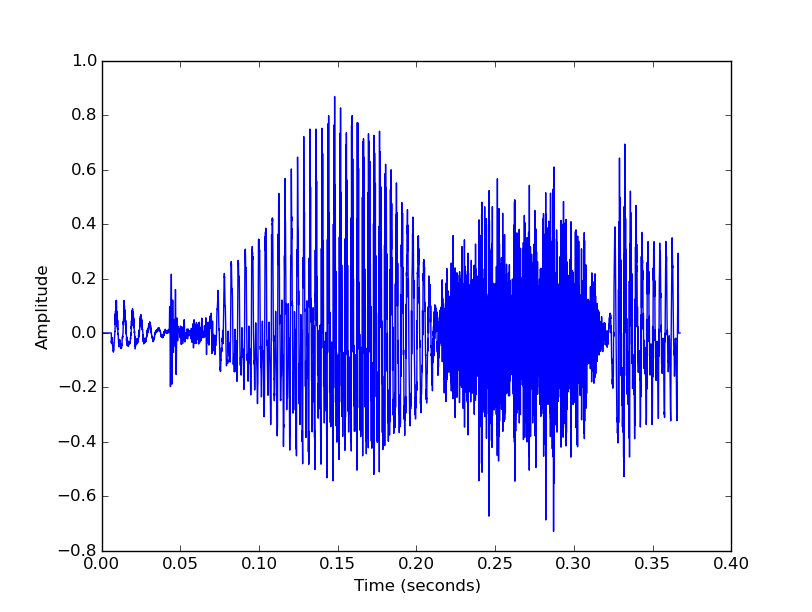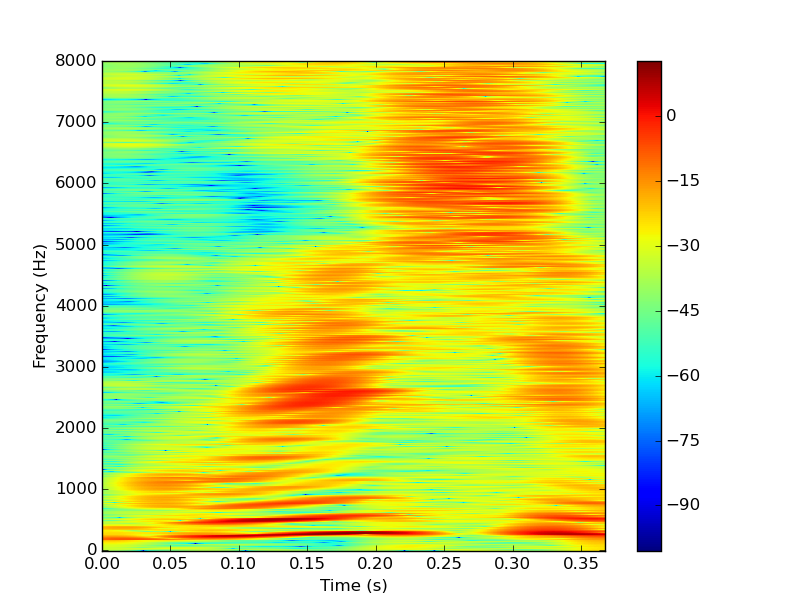ltfatpy.signals package - Signals¶
Sound signals.¶
greasy¶
Module of greasy signal loading
Ported from ltfat_2.1.0/signals/greasy.m
-
ltfatpy.signals.greasy.greasy()[source]¶ Load the ‘greasy’ test signal
Usage:
(s, fs) = greasy()Output parameters:
Returns: (s, fs)Return type: Variables: - s (numpy.ndarray) – ‘greasy’ signal
- fs (int) – sampling frequency in Hz
greasyloads the ‘greasy’ signal. It is a recording of a woman pronouncing the word “greasy”.The signal is 5880 samples long and recorded at 16 kHz with around 11 bits of effective quantization.
The signal has been scaled to not produce any clipping when played. To get integer values use
numpy.rint(greasy()[0]*2048.).The signal was obtained from Wavelab (http://www-stat.stanford.edu/~wavelab/), it is a part of the first sentence of the TIMIT speech corpus “She had your dark suit in greasy wash water all year”: http://www.ldc.upenn.edu/Catalog/CatalogEntry.jsp?catalogId=LDC93S1.
Examples:
Plot of ‘greasy’ in the time-domain:
>>> import numpy as np >>> import matplotlib.pyplot as plt >>> from ltfatpy import greasy >>> _ = plt.plot(np.arange(5880.)/16000., greasy()[0]); >>> _ = plt.xlabel('Time (seconds)') >>> _ = plt.ylabel('Amplitude') >>> plt.show()
Plot of ‘greasy’ in the time-frequency-domain:
>>> import matplotlib.pyplot as plt >>> from ltfatpy import greasy, sgram >>> _ = sgram(greasy()[0], 16000., 90.) >>> plt.show()


- References:
- [MZ93]
gspi¶
Module of glockenspiel signal loading
-
ltfatpy.signals.gspi.gspi()[source]¶ Load the ‘glockenspiel’ test signal
Usage:
(s, fs) = gspi()Output parameters:
Returns: (s, fs)Return type: Variables: - s (numpy.ndarray) – ‘glockenspiel’ signal
- fs (int) – sampling frequency in Hz
gspiloads the ‘glockenspiel’ signal. This is a recording of a simple tune played on a glockenspiel. It is 262144 samples long, mono, recorded at 44100 Hz using 16 bit quantization.This signal, and other similar audio tests signals, can be found on the EBU SQAM test signal CD http://tech.ebu.ch/publications/sqamcd.
linus¶
Module of linus signal loading
Ported from ltfat_2.1.0/signals/linus.m
-
ltfatpy.signals.linus.linus()[source]¶ Load the ‘linus’ test signal
Usage:
(s, fs) = linus()Output parameters:
Returns: (s, fs)Return type: Variables: - s (numpy.ndarray) – ‘linus’ signal
- fs (int) – sampling frequency in Hz
linusloads the ‘linus’ signal. It is a recording of Linus Thorvalds pronouncing the words “Hello. My name is Linus Thorvalds, and I pronounce Linux as Linux”.The signal is 41461 samples long and is sampled at 8 kHz.